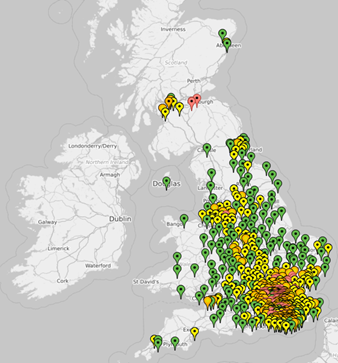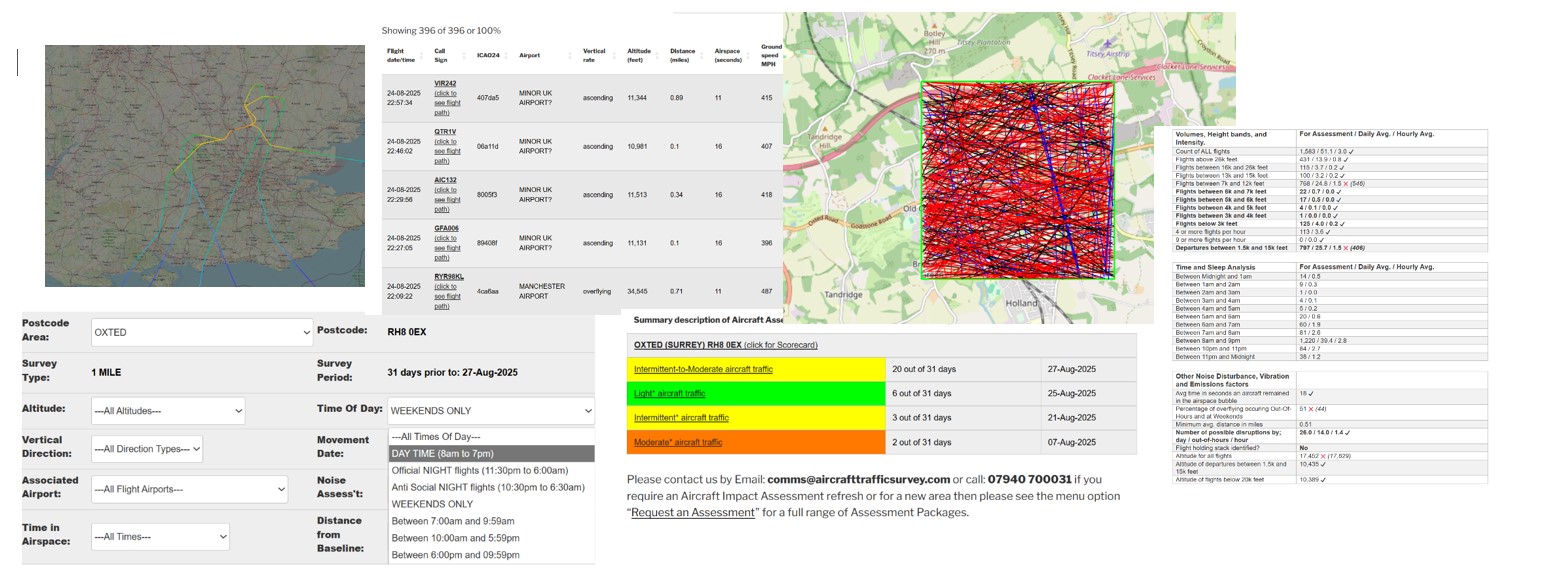https://petition.parliament.uk/petitions/577316
We have a collective responsibility to take ownership of how our postcode airspace is being overflown by the aviation industry. Please do not assume there are existing laws to protect us, there aren’t. This UK petition will provide us with a firm footing from which to launch further initiatives relating to the management of aircraft noise and emissions and to achieve that we need public access to the facts. Let’s help make the aviation industry both accountable and responsible and prevent them from chasing us out from our homes and communities.
| As UK airports expand the number of domestic and international flights will also increase but at a proportionately faster rate. As a result, more and more of our home, workplaces, schools and open spaces i.e. Postcodes, are being overflown by multiple aircraft at lower altitudes en-route to their target destination. This has become a UK nationwide issue that is touching millions of people’s lives in terms of noise and emissions and it’s getting worse, but why? |  |
As UK airports expand the number of domestic and international flights will also increase but at a proportionately faster rate. As a result, more and more of our home, workplaces, schools and open spaces i.e. Postcodes, are being overflown by multiple aircraft at lower altitudes en-route to their target destination. This has become a UK nationwide issue that is touching millions of people’s lives in terms of noise and emissions and it’s getting worse, but why?
The actual route taken by a flight considers multiple factors, such as the plane’s altitude, speed, load, proximity to the airport and where it needs to be at a point-in-time. Every flight route over the UK mainland is determined not by the airports or airlines but by Air Traffic Controllers, who take their instruction from a government owned body called NATs.
But the routing models used by NATs are not required to include the effects of aircraft noise and noise aggregation or engine emissions by postcode. The reason is simple, Aviation is exempt from our Noise and Environment Acts i.e., there is no legal obligation for NATs to consider noise or emissions by postcode when designing or amending flight routes and patterns.
So how bad is the problem? The answer is there is no official answer. No government agency is required to collect or share flight activity by postcode. However, individual researchers like myself together with many Aircraft Campaign groups have recorded evidence that shows that hundreds of UK postcodes are subject to clusters of 9+ planes per hour, at differing altitudes and often with only a few minutes of separation. Result: a continuous wall of noise, vibration and potentially pollutants such as Carbon dioxide, Carbon monoxide, Nitrogen oxide and particulate matter such as soot.
As represented by the yellow, amber and red map-pins many of the impacted postcodes are 20-35 miles out from the metropolitan cities and from the airports but the situation is often even more congested for hundreds of postcodes within cities such as London. Remember, the noise and emissions from an aircraft passing overhead will last 40-60 seconds when the flight is below 26k feet. Additionally, 50% of the flights are early morning from 4:00am, or late evening past 9:00pm, but always on a Saturday and Sunday. When have you ever been consulted about any of this?
How will knowing the flight activity numbers by postcode help? The official flight numbers will enable all of us to understand the scale and occurrences of overflying by postcode, which, if not controlled, will impact on sleep patterns, wellbeing and general health of all our families. Additionally, the same data can be used by the next generation of noise and emission models (algorithms) to determine the “best” routes through our airspace.
What if flight activity volumes numbers are not provided? The overflying of postcodes will remain uncontrolled, and no doubt get worse as the further demand for flights is satisfied through the introduction of new flight direct descent technologies. These same technologies are also designed to support the introduction of electrical passenger drones and other low level flying devices.
The requirement to publish monthly flight activity by UK postcode is simple, not onerous and is very do-able. It does not require changes to our existing laws but it will provide much needed insight into the operational management of our airspace that exists above our homes, open spaces and communities.
By sharing flight activity numbers will it not impact local house prices? The reasons for living or moving into a postcode area are complex and aircraft noise and emissions are only one of the many lifestyle factors and priorities considered. Also, like road noise, people have different levels of tolerance. So, for these reasons, we do not think house prices will be impacted by having postcode aircraft activity published on a regular basis. It is more likely to have a positive effect on house prices as people will be given the opportunity and information to actively protect their postcode communities from the Aviation industry and also the confidence to further invest in their properties.
It all sounds very sensible where do I sign? We need 100k signatures from across the nation to either mobilise the UK Government or to encourage one of the major political parties to adopt this requirement within their party ‘s manifesto.
This requirement is beyond the remit of your local MPs and it is also too big for any of the airport owners or airlines. Therefore, it’s up to us UK citizens to take ownership and drive through this proposal.
This is your petition so please do sign by clicking on the link and then we can start leading the conversation on how our airspace could and should be managed by our appointed Aviation agents. If you have further questions, then please email me at Richard.Herson@AircraftTrafficSurvey.com
